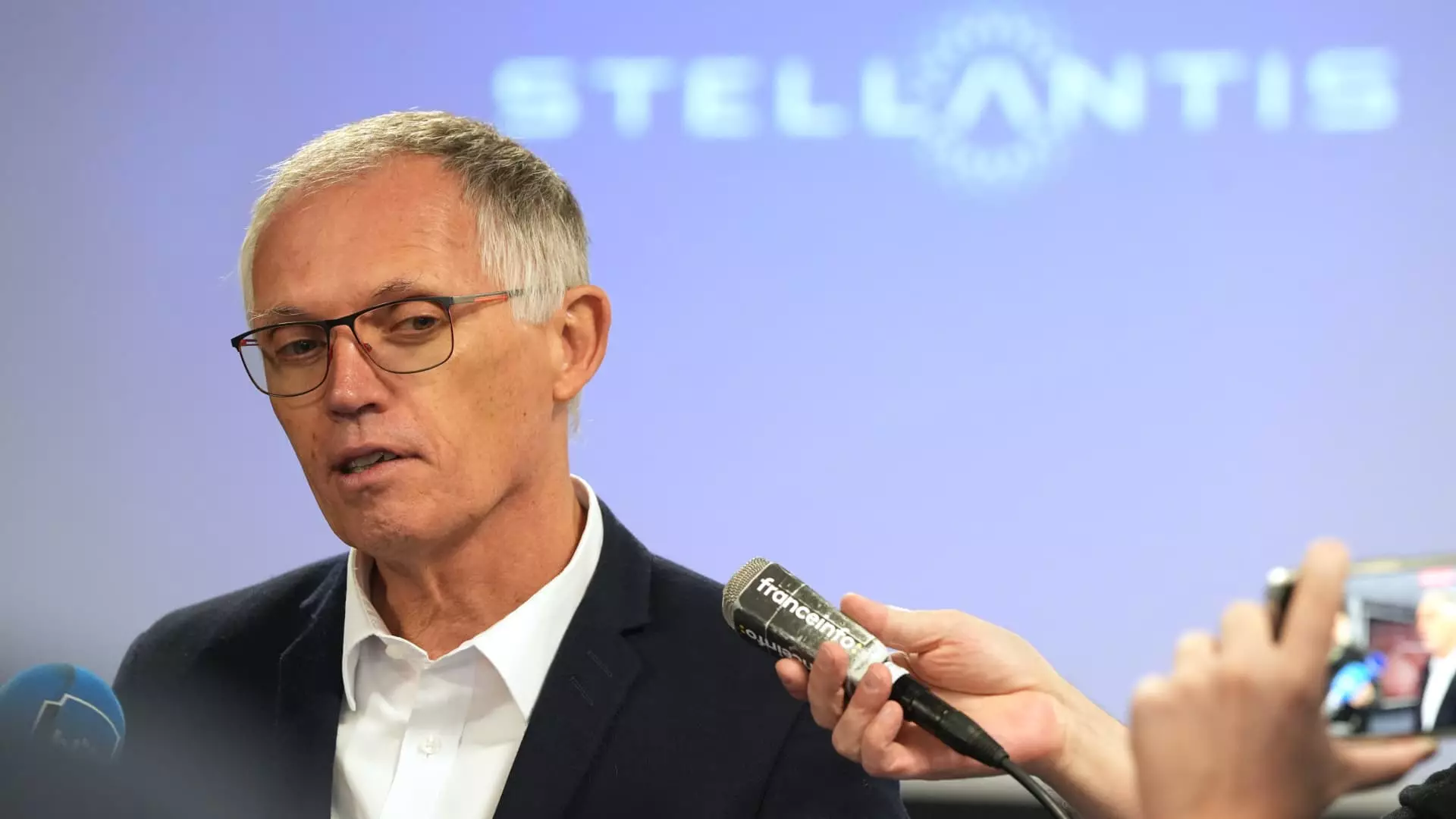In a surprising move that has sent ripples through the automotive industry, Carlos Tavares has resigned from his position as CEO of Stellantis, one of the largest automakers in the world. This decision, announced on a Sunday, has raised eyebrows not only for its abruptness but also for the circumstances surrounding it. The board of directors accepted Tavares’ resignation, which is effective immediately, with the company indicating that a search for a new CEO is already underway and expected to conclude within the first half of the next year. It is noteworthy that this sudden leadership shift comes less than two months after Stellantis stated Tavares would retire at the end of his contract in 2026.
The resignation of Tavares seems to stem from “different views” that have arisen between him and the board, as articulated by Henri de Castries, Stellantis’ senior independent director. The harmony that Stellantis experienced since its inception following the 2021 merger between Fiat Chrysler Automobiles and PSA Groupe appears to have frayed significantly. Both Tavares and the board had been reportedly aligned on strategic objectives until recent weeks when diverging opinions began to surface. Although specific details surrounding the disagreements remain undisclosed, the implications of this rift could have far-reaching consequences for the company.
The board has quickly moved to establish an interim executive committee, which will be headed by chairman John Elkann. This proactive approach highlights the urgency recognized by Stellantis to stabilize its leadership during this turbulent period. The choice of Elkann to lead the interim committee speaks volumes, considering his significant role in the company’s history. However, the question now looms about what direction Stellantis will take following the leadership transition.
Tavares’ unexpected exit raises questions about Stellantis’ struggling performance, particularly in the United States—the company’s largest market and cash generator. Since Tavares took the helm, Stellantis has encountered several challenges, particularly in 2023, as it consistently failed to meet financial expectations. The downturn is evident in the company’s reported 27% decline in net revenues for the third quarter and a 20% year-over-year drop in global vehicle sales.
Tavares embarked on a mission to make significant cost reductions, announcing an ambitious 8.4 billion euros (approximately $9 billion) in cuts soon after the merger. While cost-cutting can sometimes position companies favorably, it appears this strategy backfired under Tavares’ leadership. The company faced criticism for its apparent negligence in product investments, alongside maintaining high prices and enacting extreme measures to trim costs. Critics have voiced concerns that these aggressive cuts led to detrimental effects in operations, especially in the key U.S. market.
The reverberations of Tavares’ leadership style are evident not just among board members but also across various sectors like labor unions and dealerships. The United Auto Workers (UAW) union has been vocal about its discontent with Tavares, expressing frustration over layoffs and production cuts. The union’s call for Tavares’ removal underscores the dissatisfaction among employees who have experienced increased job insecurity during his tenure.
On another front, Stellantis’ U.S. dealership network has similarly voiced its grievances against Tavares, particularly regarding unwieldy inventory levels and what they perceive as a lack of financial support from the automaker in selling its vehicles. These criticisms direct attention toward the balance—or lack thereof—between corporate strategy and stakeholder engagement.
Looking ahead, Stellantis finds itself at a critical juncture. The search for Tavares’ replacement is an opportunity for the company to recalibrate its strategies and restore its competitive edge in a rapidly evolving automotive landscape, where electrification and innovation are paramount. The next leader will need to address the criticisms that surfaced under Tavares’ watch while revitalizing the company’s product offerings and brand images.
Stellantis must also find a way to effectively engage with its workforce and dealership partners to rebuild trust and morale that may have been lost in Tavares’ overhaul of operations. This new chapter could become a turning point for Stellantis, provided that the right leadership is chosen to guide the company through external challenges while nurturing internal relationships.
As Stellantis embarks on its search for new leadership, the automotive giant stands at a crossroads that could define its future trajectory. The resignation of Carlos Tavares is not just a moment of transition but a pivotal opportunity for renewal amid the tensions that have marked his tenure. The direction Stellantis takes in the coming months will be closely scrutinized, as all eyes remain fixed on who will step into the formidable role of CEO.


Leave a Reply